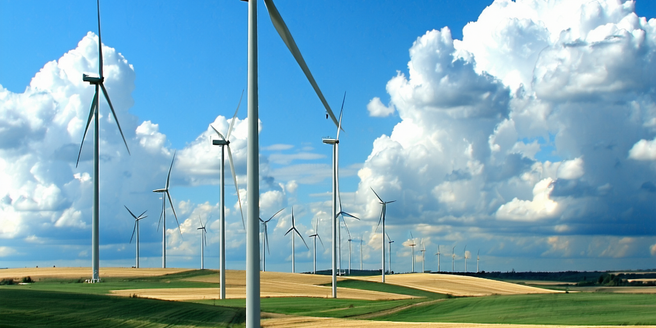
Understanding Wind Patterns for Energy Production
Wind patterns are crucial for efficient energy production. Understanding these patterns involves analyzing atmospheric conditions and topographical influences. Wind speeds and directions fluctuate due to various factors like solar radiation, Earth’s rotation, and local geography. Forecasters use advanced models to predict these changes accurately. As technology progresses, the accuracy of these models continues to improve. Knowledge about wind shear, turbulence, and seasonal variations helps in planning optimal locations and operating conditions for wind farms. Continuous study and data collection are essential for refining predictions. This understanding not only aids in maximizing energy output but also in reducing operational risks. Equipped with precise wind forecasts, energy producers can make informed decisions, enhancing overall efficiency and sustainability.
Technological Advances in Weather Forecasting
The field of weather forecasting has seen significant technological advances that benefit wind energy production. High-resolution satellite imagery and sophisticated algorithms play vital roles in enhancing predictive accuracy. Machine learning and AI have revolutionized data analysis, allowing meteorologists to interpret vast amounts of atmospheric information quickly. As a result, energy producers can better plan their operations and reduce inefficiencies. Innovations in computational power enable simulations that consider a multitude of variables. These advancements contribute to more reliable wind forecasts, empowering energy producers to optimize turbine performance. By leveraging modern technology, the accuracy of weather predictions continues to improve, providing a strong foundation for the growth of renewable energy industries. This progress is crucial for efficient and sustainable wind energy conversion.
The Role of Meteorology in Wind Farm Efficiency
Meteorology is integral to the efficiency of wind farms. Accurate meteorological data informs decisions related to site selection, turbine placement, and operational strategies. Detailed analysis of wind speeds and directions aids in optimizing turbine alignment and spacing, improving energy capture. Meteorological insights also guide maintenance schedules to mitigate wear and tear due to harsh weather conditions. By understanding weather patterns, operators can minimize downtime and enhance safety measures. As renewable energy becomes more prominent, the role of meteorology in energy production will continue to expand. Meteorology ensures that wind farms consistently perform at their best, reducing costs and increasing output. Effective collaboration between meteorologists and engineers is essential to harness the full potential of wind energy.
Barriers to Accurate Wind Prediction
Accurate wind prediction faces several challenges, impacting wind energy production. Complex variables, such as local topography, atmospheric instability, and sudden weather changes, complicate forecasts. As the demand for renewable energy sources increases, the pressure to improve wind prediction accuracy intensifies. Innovations in data assimilation and machine learning could greatly enhance prediction accuracy. Remote areas where wind farms are often located may lack comprehensive weather monitoring infrastructure. Additionally, current models may struggle with fine-scale atmospheric dynamics, leading to prediction errors. Calibration of prediction tools requires continuous field data, which can be resource-intensive. Overcoming these barriers involves strategic investments in research, data collection, and technology development. Collaboration between scientists, industries, and governments is crucial in advancing wind prediction capabilities to ensure reliable renewable energy supply.
Future Trends in Renewable Energy Forecasting
The future of renewable energy forecasting is set to embrace advanced technologies and innovative methodologies. Integrating big data analytics with real-time IoT devices will enhance the granularity of weather forecasts. AI-driven models are expected to further improve prediction accuracy by learning complex atmospheric interactions. This progression is crucial for optimizing energy production and distribution in increasingly unpredictable climates. There is a growing interest in renewable energy microgrids, which could benefit from localized, precise forecasts. As cross-disciplinary research expands, the synergy between atmospheric sciences and data technology will drive more sophisticated forecasting methods. Emphasizing sustainability, future trends will likely focus on reducing the carbon footprint of forecasting operations themselves while ensuring optimal energy resource management.
